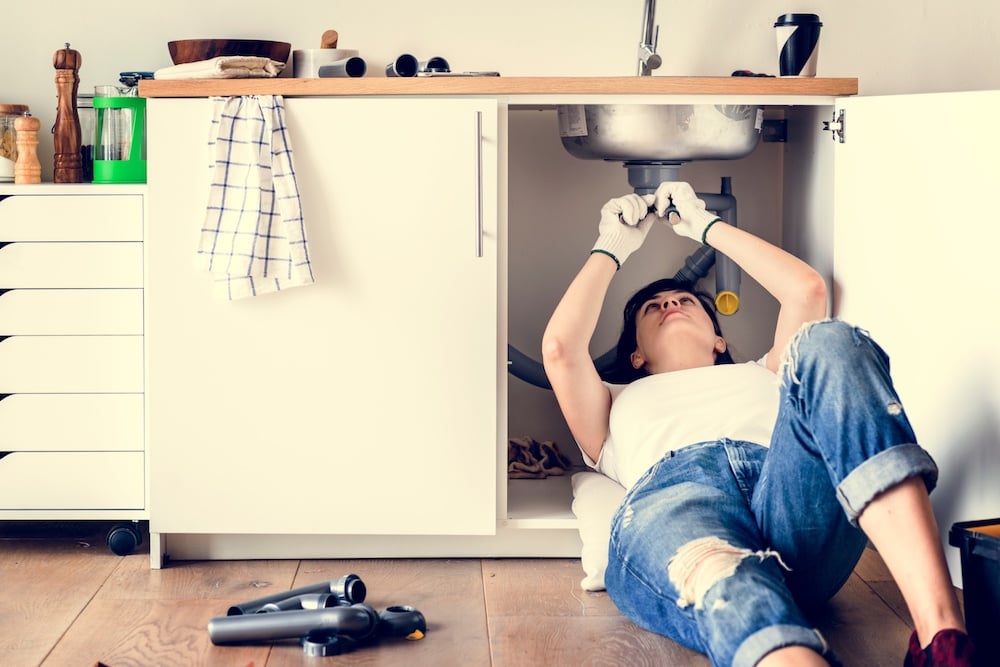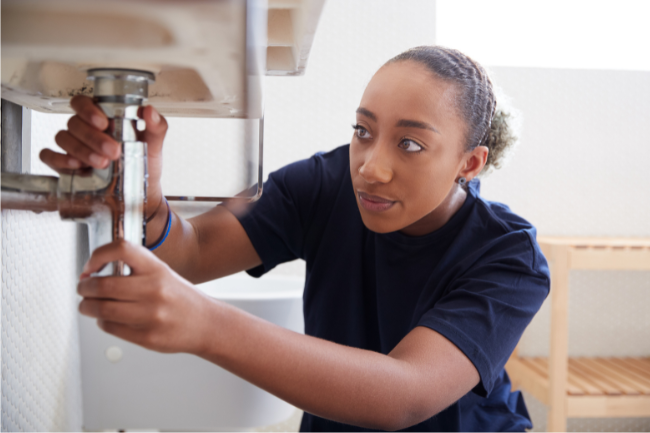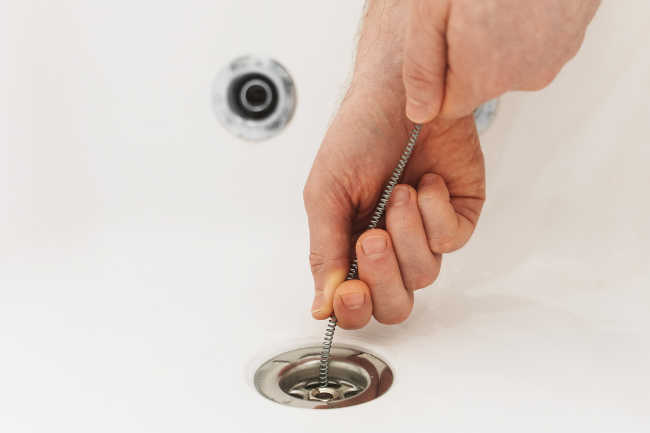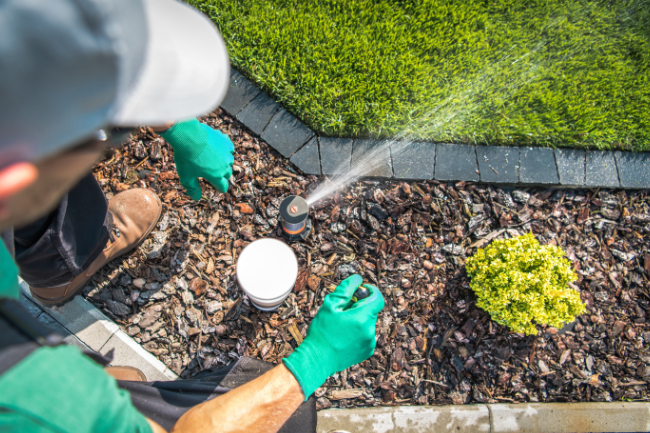15 DIY House Plumbing Tasks Every Homeowner Should Know How to Do
Posted by William Heinselman on

Some of us are quite handy around the house; others, not so much. However, there are a few home repairs and tasks all homeowners should know how to do. Knowing how to do these fifteen DIY house plumbing repairs can save you from calling in an expert and save you some money.
Common House Plumbing Issues
Plumbing issues are a common problem homeowners face, ranging from minor annoyances to major plumbing emergencies. Some of the most common house plumbing issues include clogged drains, leaky faucets, running toilets, and low water pressure.These issues may seem small at first, but if left untreated, they can lead to more significant and costly problems down the line. It is essential for homeowners to regularly maintain their plumbing systems and address any issues promptly to avoid potential disasters. Below are some of the most common house plumbing issues every homeowner should be aware of:
- Clogged drains: This is often caused by a buildup of hair, grease, food particles, or other debris in the pipes.
- Leaky faucets: A dripping faucet not only wastes water but can also lead to an increase in your water bill.
- Running toilets: This issue is usually caused by a faulty flapper valve or float mechanism and can result in wasted water.
- Low water pressure: This could be a sign of a larger issue such as a clogged pipe or sediment buildup in your pipes.
15 DIY House Plumbing Tasks

Here are 15 things that you should know how to do around the home. If you're hesitant about doing any of these tasks, be sure to consult a professional first to avoid causing more damage.
1. Snake a Drain
Many of our plumbing tips recommend snaking a drain – but you need to first understand how to do it correctly! For general usage, a 3/8 in, 20 ft-long model should do the trick. Slowly push the snake cable into the drain, turning the handle in a clockwise motion as you push. Push past the U-shaped curve in the pipe until you feel a significant amount of resistance (the clog). Try to hook the clog and continue to prod the material in order to begin to break it up. Pull the snake out of the drain very carefully so you don't lose the clog hooked on the drain snake.
2. Fix a Leaky Faucet
A leaky faucet is a nuisance and a money-waster. It can also lead to bigger problems. So, it’s important to know how to fix one. First, turn off the water to the sink and stop the drain with a rag (this way you won’t lose any small parts down the drain). A compression faucet likely needs a new rubber washer to seal the valve, and a dripping washerless faucet can be stopped up with a new O-ring.
3. Replace a Shower Head
Whether you're replacing old, outdated plumbing fixtures with low-flow, low-consumption alternatives or remodeling your entire bathroom, at some point you’re probably going to want or need to replace your shower head at one point. To do this, remove the existing shower head and lay thread seal tape at the base of the shower arm before screwing in the new piece (don’t fasten it too tightly, however). You can also replace the shower arm with a piece that’s sold separately.
4. Unblock a Clogged Toilet
Every homeowner experiences a clogged toilet from time to time. Thankfully, it’s usually a simple fix requiring nothing more than a plunger or an auger. To be sure the bowl doesn’t overflow, shut off the water supply valve behind the toilet. Then, get plunging. If that’s not successful, try snaking the toilet with an auger.
5. Unblock a Clogged Sink
When your sink is clogged, it’s tempting to reach for a chemical drain cleaner. You can try a safer alternative, such as a mixture of baking soda and vinegar. If that doesn’t work, you probably have a blocked P-trap. This is the U-shaped pipe under the sink. Place a bucket under the pipe and unscrew it in order to see if there’s a clog, then remove it and replace the pipe.
6. Replace a Faucet
Replacing a faucet isn’t as difficult as it may seem. First, choose a new fixture that requires holes in the same locations as the old faucet to ensure that it will fit properly on the sink. Shut off the water, drain the faucet, then follow the manufacturer's instructions.
7. Clean Out Gutters
Cleaning gutters twice a year can prevent clogs caused by debris and pests. Climb the ladder carefully, using a stabilizer, or find an extra set of hands to hold it, and remove leaves by hand or use a leaf blower, garden hose, or wet-dry vac. Afraid of heights? You can buy special attachments for your leaf blower or wet-dry vac in order to get the job done from the ground.
8. Unclog a Roof Drain
While you’re up there, clean your roof drain. It protects your property from rain and other weather conditions, but like the gutter, it can become clogged by leaves and other debris. This can cause water to back up on the roof, leading to leak damage and potentially a collapsed roof. You can unscrew the drain and remove debris with a gloved hand, snake it with an auger, or hose the debris down, pushing it out the drainage outlet.
9. Turn Off the Water Main
Every homeowner should know where their water main is and how to shut it off in case of a water emergency. Generally, a home’s water main valve is located close to where the water main enters the house from the street. Turn the wheel handles clockwise to cut off the water supply. For levers, slowly turn the lever handle 1/4 turn. Feeling like a real DIYer? You can also learn how to replace your water main if there’s rust in the pipe or a leak in the line.
10. Clean the Sump Pump
Sump pumps are most common in basements as they are most likely to experience flooding. Since most California homes don’t have basements, this may not apply. But, if your home does have one, you need to maintain the sump pump. It should be cleaned once or twice a year.
Turn off the power to the sump pump, or simply unplug it, first. Remove it from its pit and take it outside to rinse it off with a hose and remove any caked-on debris. Drain any water from the pit with a shop vac, and then return the pump after it has thoroughly dried.
11. Fix a Stripped Faucet
A spinning faucet handle is a common household problem, and thankfully, it can be fixed in 10 minutes or less! To fix a stripped faucet, shut off the water first. Then, remove the faucet handles or cover plates as well as the locking nut. Then, remove and replace the faucet cartridge. Once you’ve replaced it, simply retrace your step in the opposite manner to put the faucet back together.
12. Fix a Dishwasher Clog
A dishwasher sure is convenient (and cheaper than washing dishes by hand when it comes to water usage). But when it’s not working right, it can be a real nuisance. To unclog a dishwasher, remove the racks to get to the drain gate at the bottom of the appliance. Remove the gate with a screwdriver and then use a drain auger to clear debris within the pipe. You can also flush it with a baking soda and vinegar solution.
13. Adjust Water Heater Temperature
Hot showers too hot? Maybe icy cold? A simple adjustment of your water heater thermostat should do the trick (and could save you money). You’ll usually find the temperature control knob on the front of the water heater near the bottom. Above the knob, there should be a small black arrow. Simply move the knob to the desired temperature (the EPA recommends 120 degrees). On low boys, which may be in your closet, the thermostat will typically be behind a metal panel. Simply unscrew it and adjust the knob (it may just be a dial that you’ll need to use a flathead screwdriver to adjust).
14. Fix a Leaking Washing Machine Hose
That water coming out from under the washing machine means you have a leaky hose. Hoses can wear themselves out every couple of years, cracking and splitting. To repair the hose, disconnect the appliance and shut off the water. Unplug the external hoses to the washing machine and be ready to soak up some water with a towel. Then, connect your new hoses back into the machine. Make sure the cold and hot water connections are correct. Screw the other end of the hoses to the water supply and voila!
15. Replace Toilet Insides
If you find that your toilet continues to run long after you've flushed it, it's likely an indication that the internal components of the toilet are worn out and need replacing. Specifically, the fill valve, flush valve, and flapper are the parts most often in need of replacement.
While this task might initially seem daunting, it's actually within the capabilities of most DIY enthusiasts. With a bit of research, the right tools, and some patience, learning how to replace these parts can not only save you money on plumbing bills but also provide a satisfying sense of accomplishment. This is a valuable skill that every homeowner should consider acquiring.
Can’t DIY? Call Sacramento’s Trusted Residential Plumbers!
While these 15 plumbing tasks can often be accomplished on your own, there are times when you need a plumbing professional. If you have a plumbing problem that you don’t want to tackle on your own, the experienced professionals at Express Sewer & Drain in the Sacramento area can help. Contact us today!
Topics: Home Plumbing







